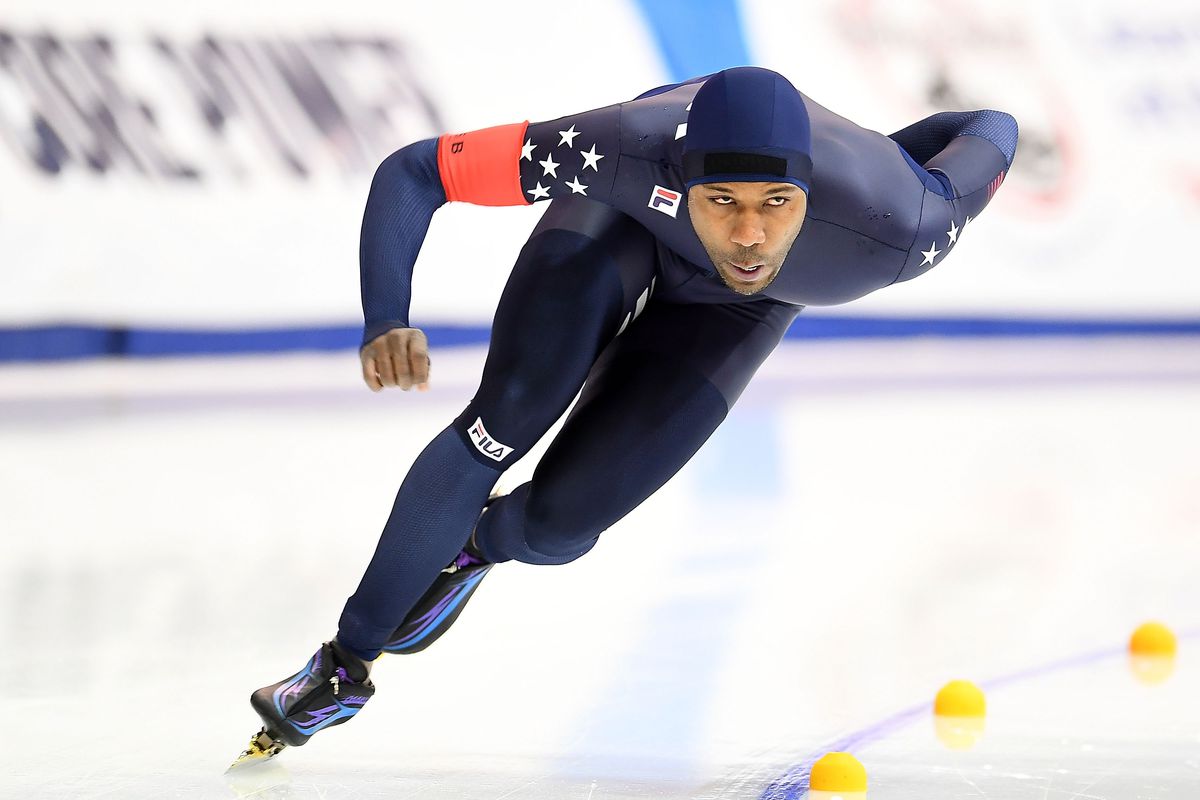
Speed skating is a thrilling and enigmatic sport that captivates audiences around the world. As athletes glide across the ice with grace and precision, they reach incredible speeds, pushing the limits of human capability. This adrenaline-pumping sport has a rich history and is filled with fascinating facts that may surprise even the most avid speed skating fan. From record-breaking performances to unique sportsmanship traditions, there is always something remarkable happening in the world of speed skating. In this article, we will unravel 13 enigmatic facts about speed skating that will deepen your appreciation for this incredible sport. So lace up your skates and get ready to dive into the thrilling world of speed skating!
Key Takeaways:
- Speed skating originated in the Netherlands in the 13th century, evolving into a competitive sport with record-breaking speeds and thrilling finishes. It has produced legendary athletes and continues to inspire future generations.
- With multiple disciplines, heart-pounding finishes, and the introduction of the clap skate, speed skating is a thrilling and enigmatic sport that requires skill, strategy, and a passion for pushing boundaries.
Speed Skating Origins
Speed skating, a thrilling winter sport, originated in the Netherlands in the 13th century. Dutch locals would skate on frozen canals between villages, testing their speed and skill. Since then, speed skating has evolved into a highly competitive and challenging sport.
Multiple Disciplines
Speed skating consists of various disciplines, including long track, short track, and marathon races. Long track races are held on an Olympic-sized rink, while short track races take place on a smaller track with tighter turns. Marathon races cover incredibly long distances, such as 100 kilometers.
Olympic Dominance
The Netherlands has been historically dominant in speed skating at the Winter Olympics, winning numerous medals. Dutch athletes’ skill, dedication, and expertise in the sport have propelled them to the top of the podium consistently.
Record-breaking Speeds
Speed skaters achieve astonishing speeds during competitions. In long track speed skating, athletes can reach speeds of up to 60 kilometers per hour (37 mph). The combination of technique, power, and endurance allows them to glide across the ice with incredible velocity.
The Clap Skate
The introduction of the clap skate revolutionized speed skating. This skate features a hinge at the front, allowing the blade to stay on the ice longer during each stride. The clap skate enhances speed and efficiency, enabling skaters to break records.
Team Pursuit
The team pursuit event in speed skating is a thrilling competition where teams of three skaters race against the clock. They work together, drafting behind each other to reduce air resistance and maintain high speeds. The team with the fastest time wins.
Heart-pounding Finishes
Speed skating races often provide nail-biting finishes. Skaters push themselves to the limit, jostling for position as they approach the finish line. The margin of victory can be as small as thousandths of a second, making every stride count.
Skating Counter-Clockwise
In speed skating, competitors always skate counterclockwise around the oval track. This allows skaters to maintain their momentum and balance while taking turns at high speeds. It also ensures fair competition and consistency in timing.
Ice Temperature Matters
The condition of the ice plays a crucial role in speed skating performance. Skaters prefer colder ice surfaces, as lower temperatures reduce friction and increase glide. Maintaining the ideal ice temperature is essential for achieving top speeds.
“In the Pack” Strategy
In short track speed skating, the “in the pack” strategy involves strategically positioning oneself in the middle of the pack during the race. This allows skaters to conserve energy and strategically make moves during the final laps, aiming to overtake competitors.
Speed Skating World Records
The world records in speed skating serve as benchmarks of extraordinary achievement. These records, set by remarkable athletes, inspire future generations to push the boundaries of the sport. The pursuit of breaking world records continues to fuel the passion for speed skating.
Protective Gear
Speed skaters wear specialized gear to enhance performance and ensure safety. This includes skin-tight racing suits to reduce air resistance, aerodynamic helmets, and gloves for better grip. Safety equipment such as knee pads and ankle guards are also worn to prevent injuries.
Speed Skating Legends
Speed skating has produced many legendary athletes throughout history. Names like Bonnie Blair, Eric Heiden, and Sven Kramer are synonymous with excellence in the sport. These athletes have set records, won numerous championships, and left an indelible mark on speed skating.
Conclusion
After diving into the world of speed skating and exploring these enigmatic facts, it is clear that this sport is not only thrilling but also rich in history and tradition. From its origins in the Netherlands to its evolution into an Olympic event, speed skating has captivated audiences around the world.The incredible performances achieved by speed skaters, the meticulous training they undergo, and the technicalities involved in the sport truly make it a captivating spectacle. Whether you are a fan of speed skating or new to the sport, these facts offer a glimpse into the fascinating world of competitive ice skating.So, next time you watch a speed skating competition, remember these intriguing facts and appreciate the dedication and skill it takes for these athletes to glide across the ice at incredible speeds. Speed skating truly is a sport that showcases the human potential for both speed and grace.
FAQs
1. How fast do speed skaters typically go?
Speed skaters can reach speeds of up to 35 miles per hour (56 kilometers per hour) on straightaways. The average speed for professional speed skaters during competitions is around 30 miles per hour (48 kilometers per hour).
2. Is speed skating a dangerous sport?
While speed skating can be a high-speed and highly competitive sport, athletes undergo intense training and wear protective gear such as helmets, knee pads, and thick suits to minimize the risk of injury. However, like any sport, there is still a level of inherent risk involved.
3. What is the difference between short track and long track speed skating?
Short track speed skating takes place on a smaller oval track, typically with tighter turns, while long track speed skating is conducted on a larger oval track. Additionally, short track races involve more tactical racing with multiple skaters on the track, whereas long track races are typically individual time trials.
4. What are some of the most successful countries in speed skating?
The Netherlands is often considered the powerhouse nation in speed skating, with a rich history and a record-breaking number of Olympic medals. Other successful countries in the sport include Norway, South Korea, and the United States.
5. How can one get started in speed skating?
If you’re interested in speed skating, it’s best to start with proper training and coaching. Look for local ice skating clubs or rinks that offer speed skating lessons or programs. It’s important to develop a strong foundation of technique and conditioning before diving into the competitive side of the sport.
Was this page helpful?
Our commitment to delivering trustworthy and engaging content is at the heart of what we do. Each fact on our site is contributed by real users like you, bringing a wealth of diverse insights and information. To ensure the highest standards of accuracy and reliability, our dedicated editors meticulously review each submission. This process guarantees that the facts we share are not only fascinating but also credible. Trust in our commitment to quality and authenticity as you explore and learn with us.


